Goal Winery
Domaine Bruno Clair
Les Véroilles Chambolle-Musigny Pinot Noir 2014

Robert Keenan Winery
Mailbox Vineyard Reserve Merlot 2013
3 good things about a 3 day weekend. Dodgers vs Padres with Kershaw on the hill followed by one of my favorite merlots. The mailbox reserve is right up there with Paloma and Switchback--rich, weighty and lush. Spring mountain does something with merlot that makes me seek them out. The '13 is still youthful and needs time to shed some tannin so I'd hold for optimum enjoyment.....and optimum enjoyment is always the goal. Happy Labor Day weekend 👷🏽💼🍷🍈🍈 — 8 years ago
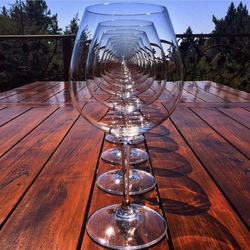


Pulido-Walker
Melanson Vineyard Cabernet Sauvignon 2013


Diseño
Old Vine Mendoza Malbec 2014
My goal: Find the best value, and taste in a wine that you can find in Walmart. This a good candidate. For around $10, smooth and well rounded. — 9 years ago
Aonair Wines
Duarte Vineyard Grenache Blend 2014
What an unbelievable treat to get to attend a private tasting with Aonair Wines along with founder and winemaker Grant Long Jr. Heard from friends, and confirmed by Grant his self, that wines can only be attained if he has met you in person. Love that philosophy. Grant is a larger than life personality...bearded, boisterous and a hearty laugh. His wines represent him well and though they are young (tasted '13s and 14s) they feel well aged already, which is his goal. His Grenache is the best I've ever had, and his cab (100% cab) and mountain blend are so enjoyable that we joined the wine club due to a waiting list about to be formed. Exquisite wines, along with a unique and personable business model, make this a can't miss. Hello new favorite winery. — 9 years ago
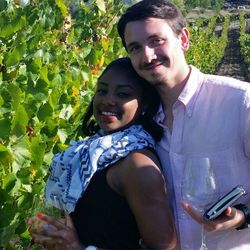

I think I have the blue oak vineyard bottle too downstairs.

New Glarus Brewery
Spotted Cow Cream Ale
Owners Dan and Deb Carey have grown New Glarus Brewery to the 25th largest in America. The flagship brew is Spotted Cow, sold only in Wisconsin . @ delactable cream ale description is incorrect!
The goal was to brew a recipe that farmers would enjoy.
They call it farm house ale, unfiltered and cloudy. Pilsner malt, caramel malt, white wheat, and saaz hops. Hard water comes from the brewerys own deep well .
5.1% abv. — 6 years ago

Bodegas Alejandro Fernández
Tinto Pesquera Crianza Ribera del Duero Tempranillo 2009
A delightful Spanish wine made up mostly of a clone of Tempranillo called Tinto Fino or "Fine Red". This wine is also considered one of Spain's finest (see Dominio de Pingus). Pesquera is owned by Alejandro Fernandez who goal is to make "masculine" wines. This is a good description. Meaty, bold but not overpowering like a Zinfandel. I'm sure the age of this vintage - 2009 - has helped its quality. — 8 years ago
Domaine Marcel Deiss
Alsace White Blend 2015
Gordons tasting Deiss 6/6/17. $20. No 2. Clean nose of white flowers and peach notes. Soft yet balanced palate that is silky yet with undercurrent of tension. Looking forward to the rest of lineup! Nice value. Blend of 13 varietals! Hope nose represents Alsace! Ripeness is goal. All natural. — 9 years ago
Aalto
Ribera Del Duero Tempranillo 2010
A decadent pleasurefest for sure. Already comes à la mode straight from the bottle, with a heaping scoop of vanilla that melts your face. Gushes blackberry. It certainly doesn't need complexity to accomplish its goal, but the secondary cherry tobacco, spice box, and orange peel potpourri are a bonus. — 9 years ago
Barrack
X Ten-Goal Happy Canyon Vineyard Red Blend
thanksgiving — 9 years ago
Teliani Valley
Kindzmarauli Semi-Sweet Saperavi 2013
Semi sweet is right. I'd say the wine is a bit sweeter though. Here's to my first apt. paid by me through my first full time job. Here's to Seamus Coleman's first ever international goal today against Georgia. Here's to my first step towards complete independence. Here's to the hope that things get better, as I've said each and every time I opened a bottle of Teliani Valley. That's why I buy it, the taste is just a bonus. Buying the chance to dream — 9 years ago
Axios
Napa Valley Cabernet Sauvignon 2008
Outstanding effort. There are many reasons why this wine is spectacular, but aside from the Atlas Peak fruit, I love that they have held these back and aged them before release. The nose is powerful full of cigarbox and espresso, and baking spices. The pallet defines balance, exhibiting notes of red plum and blueberries, cinnamon, mocha, vanilla bean, and a gorgeous lingering finish. This is a goal that Napa Cabs should strive for, not too over extracted, the right tannins, and use of Oak not to hide everything else great about the
Wine.
Cheers!
$120 — 9 years ago
Schramsberg Vineyards
Methode Traditionnelle Brut Blanc de Noirs Pinot Noir 2015
Jack and Jamie Davies revived the historic vineyards and cellars in 1965, with a goal to produce world-class sparkling wines, passing torch to their son Hugh. A blend of 81% Pinot Noir and 19% Chardonnay (blend varies each year) with stone and berry fruit aromas and earthy spice. On the palate the light mousse shows raspberry, peach and mango flavors with biscuit and slight baking spice notes. Long finish, lively acidity ending with citrus and yeasty tones. Grab a bottle for Valentine’s Day. — 6 years ago
Silver Oak
Alexander Valley Cabernet Sauvignon 2014
All spice. Burnt pomegranate. Life goal is to make this my everyday drinker. — 7 years ago
Château Lafite Rothschild
Carruades de Lafite Pauillac Red Bordeaux Blend 2003
On the nose, ripe; blackberries, sweet & sour dark cherries, cooked cherries & strawberries & hues of blueberries. Black tea, cola, soft baking spices; vanilla, light clove & cinnamon. Crushed rocks, stones, limestone, turned, moist black earth, tobacco leaf, saddle-wood, soft leather, dry & fresh dark red florals.
The body is medium edging toward full. The tannins pretty well resolved. The ripe fruits show the hot, ripe vintage. Blackberries, sweet & sour dark cherries, cooked cherries & strawberries & hues of blueberries black tea, cola, soft baking spices; vanilla, light clove & cinnamon. Crushed rocks, stones, limestone, tobacco with ash, some graphite, soft medium dark spice, turned, forest floor, powdery but edgy minerals, saddle-wood, soft leather, dry & fresh dark red florals with some violets on the finish.
This showed better with Ribeye. The Ribeye brought out a fuller, richer wine with even more complexity. 9.35-9.4 with the Ribeye. It just missed 9.2 on its own. It’s big brother the 03 “Lafite” is 💯 point Parker wine.
Photos of; Chateau Lafite, their oak vat fermenters, Estate wine and their magnificent barrel room.
Interesting history and producers notes...Lafite Rothschild has a long and interesting history dating back to 1234, even though the property was not in the Bordeaux wine business at that time.
It is has been largely believed that vines were already planted on their terroir. The owner of the estate at the time, Gombaud de Lafite left his mark, his name. Almost 1,000 years after he owned it, the Chateau is still named after him! The vines were probably in existence at Lafite for over a century, it was not until around 1680, the majority of vineyards of what we know of as Lafite Rothschild today were created. This is because on the 1680 estate manifest, there are six mentions of their Bordeaux vineyards. Jacques de Segur, earns credit for cultivating the vineyard as I wrote in my Colon Segur post last weekend. In 1695, Alexandre de Segur married Marie-Therese de Clauzel, heiress to Chateau Latour. So to dovetail that write up, within a generation, the Segur family married into two of the greatest Bordeaux vineyards, Chateau Lafite and Chateau Latour! When their son, Nicolas-Alexandre passed away, Chateau Lafite and Chateau Latour were separated.
In 1797, Chateau Lafite was sold again. In the deed of sale, Chateau Lafite was described as a Premier Cru of Medoc. This is one of the earliest mentions of what we know of today as Lafite Rothschild producing wines of what would later be classified as an 1855 First Growth.
At that time, of Lafite were managed by the Goudal family. The Goudal family were wine historians and were able to read accurate records and details of the viticulture and marketing plans for Chateau Lafite in the estates formative years. The Goudal family gets the credit for creating the cellar and saving many of the oldest bottles that remain in the cold, dark cellars, including their oldest bottle, the 1797 Lafite!
The start of the famous Rothschild family begins in 1744, with the birth of Amschel Meyer. Amschel Meyer began creating his fortune while working as a merchant at “Zum Roten Schild,” which eventually became the family name of Rothschild.
In 1798 his sons were sent to various cities to create their fortunes. Needless to say, his sons all prospered as did their children in turn. This eventually led to them wanting to own a Chateau in Bordeaux. So in 1853, Baron Nathaniel de Rothschild, an English member of the Rothschild family, purchased Chateau Brane-Mouton. As was the custom of the day, the new owner renamed it using his name and Chateau Mouton Rothschild was born.
This was followed in 1868, when James Rothschild, another member of the family purchased Chateau Lafite, which was now a coveted First Growth.
On 8 August, 1868, Baron James d’Rothschild purchased Chateau Lafite, which was sold at a public auction in Paris. It’s assumed, he bought the property for family competitive reasons looking to one up his brother, the owner of Mouton Rothschild. At that time, Mouton Rothschild was only a Second Growth at the time. But, that does not paint the entire picture. The 1855 Classification had not taken on the importance associated with it the we see it today. Plus, buying Lafite was a reasonable investment as the vineyard sold for about 8 times its earning potential.
The actual Chateau is one of the older structures in Bordeaux, as part of the building dates back to the later part of the 16th century. In 1868, the vineyard took up 135 hectares, of which 74 hectares were cultivated with vines. Production was much smaller in those days than it is today as it was between 4,000 and 5,000 cases.
Just three months after the purchase, Baron James d’Rothschild passed away and Chateau Lafite Rothschild became the joint property of his three sons; Alphonse Rothschild, Gustave Rothschild & Edmond Rothschild. Since 1868, Chateau Lafite Rothschild has remained in the hands of the of Rothschild family. The new owners renamed the estate Chateau Lafite Rothschild.
Jumping ahead to the modern age, in 1962, the Rothschild family added to their holdings when they purchased Chateau Duhart-Milon, a Fourth Growth vineyard also located in Pauillac. It was owned by the Casteja family for more than a century, Chateau Duhart Milon suffered from neglect and was in a awful condition. By the time Duhart Milon was obtained by the Rothschild family, the vineyard was down to only 17 hectare which required extensive renovations.
Baron Eric Rothschild, nephew of Baron Elie Rothschild, took over the management of Lafite Rothschild in 1974. Baron Eric Rothschild was part of the fifth Rothschild generation to inherit Chateau Lafite Rothschild. In 1984, the Rothschild family added to their holdings in Bordeaux with the purchase of Chateau Rieussec in Sauternes.
1987 was a difficult vintage, but because that was the year Lafite celebrated the inauguration of their wine new cellar, they had a lot to be excited about.
The new cellars were built under the supervision of Catalan architect Ricartdo Bofill, is both underground and circular, with a vault supported by 16 columns, giving the structure a majestic architectural style. The cellar holds 2,200 barrels, which is about 55,000 cases of wine. The construction took two years to finish and was completed in 1988.
Domaines Baron Rothschild became one of the first Bordeaux properties to invest in South America when they purchased Vina Los Vascos from a Chilean family. The owners of Lafite Rothschild continued expanding their holdings with the purchase of Chateau lEvangile in Pomerol from the Ducasse family, who owned the property for almost 100 years.
The wine making at Chateau Lafite Rothschild was managed by Charles Chevallier, who began his position in 1994. Charles Chevallier was replaced by Eric Kohler in January 2016. 2017 saw another change at the estate when Jean Guillaume Prats replaced Christopher Salin as the President of Domaines Baron Rothschild.
Perhaps, it’s the most refined of the First Growth. The wine, like all First Growth’s takes decades to mature. It has remarkable staying powers. Bottles of 1870 Lafite Rothschild discovered in the Glamis castle remain profound at more than 140 years of age! It is consider by many Master Sommeliers to be the best wine in the world.
Chateau Lafite Rothschild is one of the earliest major Bordeaux estates to bottle their own wine. In 1890, they bottled a large portion of the wine and again in 1906. Part of the estate bottling was due to requests from Negociants who were willing to pay more for Chateau bottled wines. Also, bottling was primarily done to combat piracy. At the time, it was known that merchants in some countries, like Russia were bottling cheap wine and placing labels from Lafite Rothschild on the bottles. The Koch’s famous Jefferson bottles were not the first attempt at counterfeiting.
Prior to 1996, some would say the property had its share of ups and downs. The 1960’s and 1970’s were not great for Chateau Lafite Rothschild. But since 1996, Lafite Rothschild has been producing some of the best wine in their history!
Sadly, only the wealthy can afford to purchase it. Price aside, there is no denying the level of quality. In 2003 Lafite Rothschild produced a wine that is possibly unequaled by the estate at any time in their long history. Hence, my purchase of their 03 second wine. 2009, 2010 and 2016 are not far behind.
Starting in about 2008, Lafite Rothschild became the most collectible wine from Bordeaux. Prices exploded due to demand from China as Chinese businessmen bought them as gifts or bribes depending on you look at it.
The reason this started was Lafite Rothschild paid for product placement on the number one rated Chinese soap opera on television. Characters in that show were pictured enjoying life with Lafite Rothschild and since then demand went through the roof as did priced.
However, Issac Newton had it right when he declared “What goes up, must come down.” Prices for Lafite Rothschild plummeted after 2011. By the difficult 2013, prices were finally starting to hold firm, but many of the vintages that were setting price records on a daily basis had lost close to 50% of their value.
Starting with the 2012 vintage, Chateau Lafite Rothschild began instituting anti-counterfeiting measures. From 2012 forward, to help fight, rampant counterfeiting, the estate places a seal of authenticity on the capsules of both Lafite Rothschild and Carruades de Lafite. The seal features a unique, numbered code that can be checked on their website, to verify if the wine is real.
The 112 hectare vineyard of Chateau Lafite Rothschild is planted to 70% Cabernet Sauvignon, 25% Merlot, 3% Cabernet Franc and 2% Petit Verdot. This shows a slight change in the vineyard.
While Cabernet Sauvignon remained at 70%, today there is slightly more Merlot, less Cabernet Franc and the Petit Verdot has been added since the mid 1990’s.
Located in the far north of the Pauillac appellation, only the small, Jalle de Breuil stream separates the vineyards from St. Estephe. You could divide the vineyards of Chateau Lafite Rothschild into three sections with 100 separate parcels in all. The estate has close to 50 hectares of vines located close to the Chateau, on both sides of the D2, which offers gentle rises in elevations of up to 27 meters. They also have about 50 hectares vines planted on the plateau in the Carruades sector, where they have two blocks of vines, one of which is inside the vineyard of Chateau Mouton Rothschild. It is interesting to note that even though the parcels in the Carruades sector give their name to the second wine of the estate, those vines are almost always placed in the Grand Vin.
There are also vines adjacent to, and interspersed with the vineyards of Chateau Duhart Milon. The property also consists of a smaller, 4.5 hectare parcel of vines located in the Saint Estephe appellation, “La Caillava”. The vines in St. Estephe are situated not that far from Cos d Estournel, which are located on a larger a parcel known as Blanquet. The vines in Saint Estephe are allowed to be placed into the wine of Chateau Lafite Rothschild because those vines were used to produce Lafite in 1885, at the time of the classification. The vineyards are close to their famous neighbor Mouton Rothschild.
Located just south of the Chateau, the best terroir of Lafite Rothschild has a thick layer of gravel with sand, clay, marl and limestone in the soils with rolling, gravel slopes. The gravel can be as deep as 4 meters in some parcels.
It is important to note that even though their vineyards are in the far north of Pauillac, most of the soil is pure gravel, rocks and stones. With more than 50% of the soil consisting of gravel, that is a large part of the reason Lafite Rothschild has such elegant, feminine textures and that coveted sensation of minerality.
On average, the vines are close to 40 years of age. However, Chateau Lafite Rothschild has much older vines. In fact, they have some vines that are more than 100 years of age planted in the La Graviere section. That small parcel of Merlot vines dates back to 1886. Less than 1% of the vines are that old.
Additionally, they have a small section of Cabernet Sauvignon that dates back to 1922! Other old vines range from 50 to 90 years of age! They also maintain some of the oldest Petit Verdot vines in the Medoc that was planted in the early 1930’s.
At Chateau Lafite Rothschild, between 1% to 1.5% of the vineyard is replanted every year. Vines less than 20 years of age are never included in the Grand Vin.
The vineyard of Chateau Lafite Rothschild is planted to a vine density that ranges from 7,500 to 8,500 vines per hectare. Only organic fertilizers are used in the vineyards of Lafite Rothschild.
During harvest, the goal is not to pick at the maximum level of ripeness. Instead, they are seeking a blend of grapes at differing levels of maturity, which gives the wine its unique textures, freshness, aromatic complexities and elegant sensations.
Lafite Rothschild is the largest of the First Growth vineyards with close to 112 hectares of vines. A large portion of the estate is taken up with stunningly, beautiful landscaping, lakes, trees and parkland.
At one point in time, Chateau Lafite Rothschild produced a dry white, Bordeaux wine that was sold as Vin de Chateau Lafite. The wine was produced from a large percentage of Semillon, blended with a small amount of Sauvignon Blanc. The last vintage for their white wine was 1960. The wine was sold as a generic AOC Bordeaux blanc with a simple, scripted label, black and white label.
Lafite vinification takes place in 66 vats that are a combination of 29 wood vats, 20 stainless steel tanks and 17 concrete vats that range in size from as small as 45 hectoliters up to 123 hectoliters in the concrete and as large as 270 hectoliters for the wood. The wide range of vat sizes coupled with different materials allow Chateau Lafite Rothschild to vinify depending on the needs of each specific parcel and grape variety. The stainless steel tanks and oak vats are used for Cabernet Sauvignon. The Merlot is vinified in the concrete tanks. Malolactic fermentation occurs in smaller, stainless steel tanks that vary in size from 25 hectoliters up to 60 hectoliters. At this point, Chateau Lafite Rothschild does not yet use gravity to move the fruit and juice in the cellar. It’s a good bet that a remodel is coming soon.
The average annual production of Chateau Lafite Rothschild ranges from 15,000 to 20,000 cases of wine per year, depending on the vintage. They of course make this second wine, Carruades de Lafite, which due to the name and association with the Grand Cru, has also become extremely collectible. Carruades de Lafite takes its name from a specific section of their vineyard that is located near Mouton Rothschild. Carruades is actually one of the older second wines in Bordeaux, as it was first produced in the mid 1850’s. About 100 years later during the mid 1960s, the estate reintroduced their second wine naming it Moulin de Carruades. The name was changed again in the 1980’s to Carruades de Lafite.
There is also a third wine which is sold as an AOC Pauillac that is produced from declassified fruit from Lafite Rothschild and Duhart-Milon.
The blend for Chateau Lafite Rothschild changes with each vintage depending on the character and quality of the vintage. Generally speaking, the amount of Cabernet Sauvignon in the blend ranges from 80% to 95%. Merlot is usually 5% to 20%. Cabernet Franc and Petit Verdot usually varies from 0 to 5%.
— 8 years ago
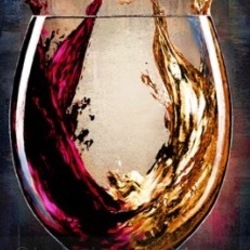








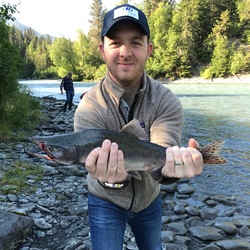
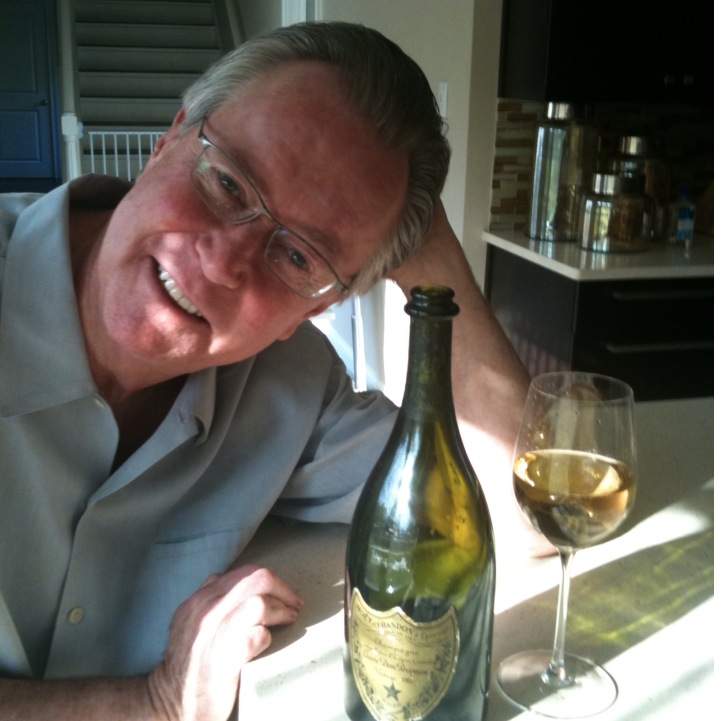






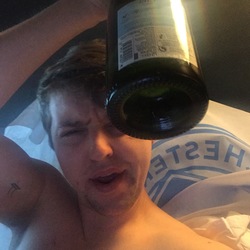
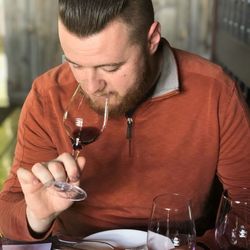
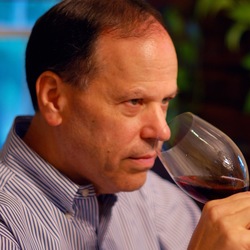


Shay A

Week 4 of our virtual tastings, this week’s theme being burgundy chosen by Joe, ideally from Chambolle-Musigny or Vosne-Romanee. Always good for some laughs and lots of knowledge being dropped! @Mike R
@Ron R @David L @Joe Lucca @Shawn R @Bill Bender @Eric LaMasters @Carl Fischer
A village level wine from a reputable producer in a solid vintage. Upon opening, I put this straight in to the decanter with a goal of two hours. I had a small sip at the beginning and realized it would need every bit of those two hours, and likely more. Extremely coiled, herbal and thin. At the two hour mark, fleshy black cherry skin, potpourri and tart red fruits started to appear aromatically. Once this hit the four hour mark, it gained heft (still retaining good acidity) with forest floor, a touch of iron, and added some spice and black peppercorn toward the finish. Evolved continuously throughout the evening. Definitely youthful, so if opening now, I’d give this 4+hrs to reveal itself appropriately.
Edit: tried another glass the day after and it stayed in line with how it was at the 4hr decanting mark, with a slightly more pronounced truffled mushroom note. — 6 years ago